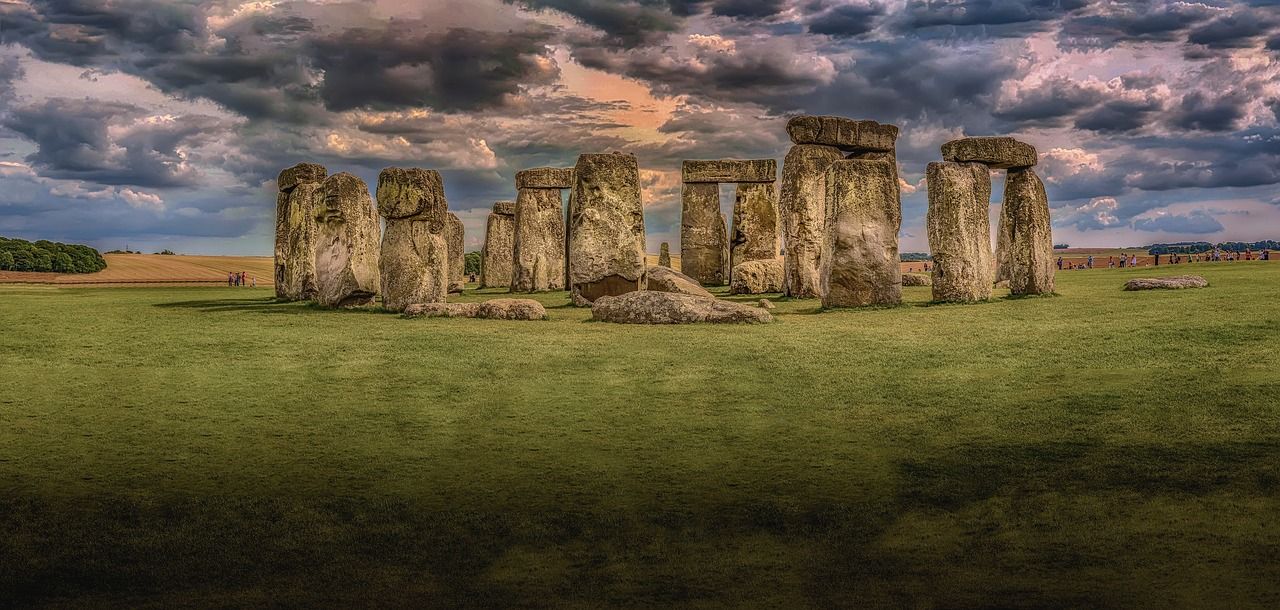Party like it’s 2500 BC: people in the Late Neolithic came from afar for Stonehenge mass celebrations
A recent study has suggested that the Stonehenge monument in Wiltshire might have played host to ritual feasting parties that drew crowds from as far afield as Scotland and West Wales. Isotope analysis has shown that these prehistoric partygoers travelled hundreds of miles and were even told to B.Y.O.P (bring your own pigs).
The research project, spearheaded by Dr. Richard Madgwick from the department of History, Archaeology, and Religion at Cardiff University, provides fresh insight into the rituals of the people of the Late Neolithic period, which lasted between circa 2800 and 2400 BC. Though it has long been established that mass feasting rituals were held at Stonehenge, the origins of those who attended has remained a mystery.
Isotope analysis has shown that these prehistoric partygoers travelled hundreds of miles and were even told to B.Y.O.P (bring your own pigs)
Madgwick’s research has shown that not only did people in the Late Neolithic period travel to Stonehenge from the farthest reaches of the country to get to these gatherings, but they were also required to bring along their own home-reared livestock for participation in ritual feasting. This implies that the feasts at Stonehenge were some of the first mass parties in the history of Great Britain.
The study used isotope analysis, which assesses the ratios of different isotopes in the remains of animals. Isotope analysis has been used to reveal the eating habits of our ancestors, as well as details of the environments in which they grew up. Carbon, nitrogen, oxygen, and strontium isotopes are the types most commonly used in the field of archaeology to get an indication of the diet and geographical origins of people and animals.
Carbon, nitrogen, oxygen, and strontium isotopes are the types most commonly used in the field of archaeology to get an indication of the diet and geographical origins of people and animals
In this study, the researchers used isotope analysis on the bones of 131 pigs found at four sites that all served Stonehenge and Avebury – Marden, Durrington Walls, Mount Pleasant, and West Kennet Palisade Enclosures. Pigs were chosen for the study because they featured ubiquitously in Late Neolithic ritual feasts – in fact, pig remains made up 90% of the 38,000 remains found at the Durrington Walls site.
If the pigs had been raised close to one another in the area surrounding Stonehenge, then there would be little variation in the isotope ratios in their remains. However, the results showed great variation in isotope ratios, suggesting that the pigs brought to Stonehenge for feasting parties had come from across the entire country. Some pigs even came from as far away as Scotland and West Wales. This adds new information to the history of ritual feasting at Stonehenge; for the first time, it has been shown that the people who attended these feasts came from afar and had complex networks of interaction and movement.
If the pigs had been raised close to one another in the area surrounding Stonehenge, then there would be little variation in the isotope ratios in their remains. However, the results showed great variation in isotope ratios, suggesting that the pigs brought to Stonehenge for feasting parties had come from across the entire country
Madgwick remarked upon the incredible lengths that these Neolithic people must have gone to in order to bring their own pigs to the feasts at Stonehenge from far afield: “Pigs are not nearly as well-suited to movement over distance as cattle and transporting them, either slaughtered or on the hoof, over hundreds or even tens of kilometres, would have required a monumental effort. This suggests that prescribed contributions were required and that rules dictated that offered pigs must be raised by the feasting participants, accompanying them on their journey, rather than being acquired locally.”
Indeed, the conclusion that people brought their livestock long distances to Stonehenge, despite the challenges this must have entailed, correlates with previous knowledge about the long-distance networks connected to Stonehenge. The people of Stonehenge were no strangers to such efforts – some of the enormous bluestones that form the monument itself came from the Preseli Hills in Wales, 180 miles away. Madgwick stated: “These gatherings could be seen as the first united cultural events of our island, with people from all corners of Britain descending on the areas around Stonehenge to feast on food that had been specially reared and transported from their homes.”
The conclusion that people brought their livestock long distances to Stonehenge, despite the challenges this must have entailed, correlates with previous knowledge about the long-distance networks connected to Stonehenge
Thanks to Madgwick’s study, a more detailed picture can now be painted of the cultural makeup of the Stonehenge parties of the Late Neolithic period. People came from far and wide to celebrate and feast together, travelling hundreds of miles with their livestock. Perhaps, next time, the trip from your accommodation to the Copper Rooms on a Wednesday night won’t seem such a long one.

Comments